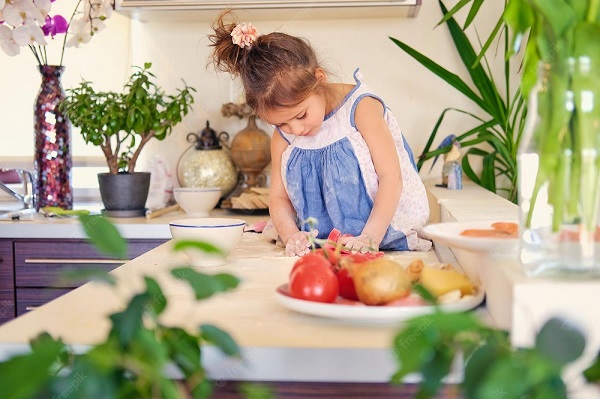
Did you know that many of our children’s sensory experiences through life and play can impact food preferences or the way they respond to particular food textures?
For example, children who dislike walking barefoot on grass or playing in the sand using their hands and feet can have a tendency to steer clear of multiple textured foods such as rice, grains, legumes (peas and beans) or soups and sauces with ‘bits’ in them. Whilst other children who dislike getting their hands messy while making cakes, painting or using glue can have a strong dislike of wet foods such as sauces and gravy and can prefer to have their foods kept separate and not mixed together. Is this the link to your child’s eating habits?
“Children who have experienced and suffered from reflux can present a diverse set of sensory difficulties that can become a combination of the above preferences but perhaps on an even more severe level due to the discomfort and stress that is caused with food, eating, regurgitation and negative associations with these experiences,” explains close friend, Lucy Thomas, children’s feeding expert and director of Mange Tout Kids.
“Children who have suffered from reflux tend to have a very sensitive gag reflex and can retch or gag on watching others eat, or simply at the sight or smell of certain foods, it can also occur with non-food stuff such as modelling with play dough, touching wet or tacky surfaces or seeing someone put a pen in their mouth subconsciously whilst they are thinking between writing. Children who have suffered from reflux tend to have a strong preference for dry foods as these feel safe and stay down.”
If your child presents some of the above preferences or behaviours it must not be assumed that they have any reflux issues, however, it can’t hurt to rule it out with your child’s GP or paediatrician. More often than not many of these behaviours can be overcome by incorporating lots of sensory experiences within daily routine and playtime.
Have you also noticed how much food marketing is steered towards children’s preferences for pasta sauce with “no bits”, yoghurts and fruit squeeze pouches that are smooth and fruit string/bars that are more like lollies than actual fruit? Not to mention the variety of processed dry foods snacks with little nutrition, that can develop unhealthy snacking habits. For busy parents, many of these options can be a great back-up and it can seem difficult to sway your child towards new foods, textures and experiences. Letting them be a “creature of habit” is the easier option, with the preference being that you serve a smooth pasta sauce, no bits yoghurt and plain breadstick they will eat, rather than they eat nothing at all.
Research shows that more children than ever dislike getting messy and dirty, so as parents it is important to set a time and place for a creative and fun messy play that can help desensitise your child.
“This can be anything from painting, play dough, cake making, flour and water play to collecting leaves and stones for craft, burying feet in sand and mud, painting the palms of hands and feet or playing with cars or small animals in a tray of rice, lentils, cereal, jelly or flour.
“If your child finds any of these tricky, lead by example and demonstrate, but also offer up a sticky or messy hand for a high five. Make sure there is always a bowl of water and paper towel close by to give your child the confidence to have a go – but then be able to wash their hands. Work up to prolonging the length of time that the food, paint or sand is on their hands before they wash them, this can be done by extending the number of high fives (work up to ten before they wash their hands),” explains Lucy.
This is the first positive step in converting your child to sample new foods and textures. Once messy play has been established it is time to work in the other senses – using not just sight and touch but also smelling, kissing, licking and eventually crunching into new textures before new foods end up on the plate at mealtimes. Remember to have fun, model for your child, get involved and offer lots of praise for every small step taken.



